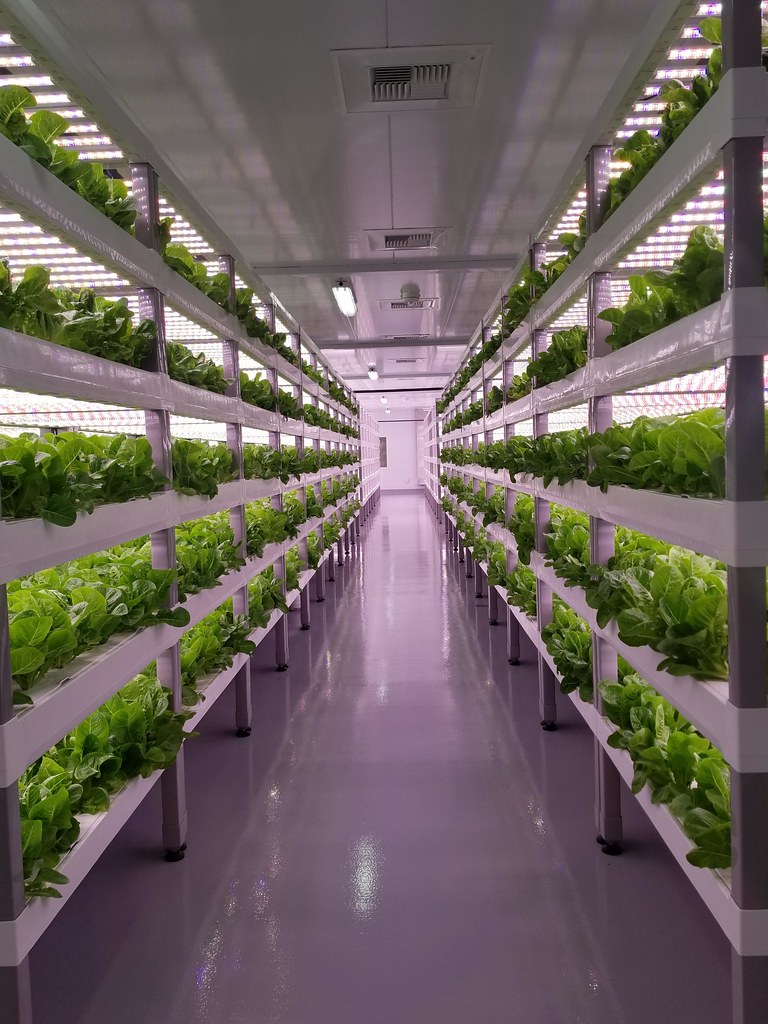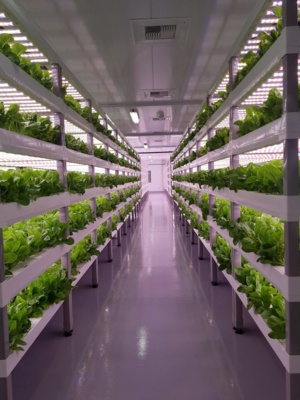Singapore is a small south-eastern city in Asia which seems to be “an unlikely” place for seeing revolution in the farming sector. However, the island of “5.6 million people” has plans of feeding its people on a less depended import model as we see “tiered fish farms, vegetable plots atop office buildings and lab-grown shrimp” driving Singapore’s “own food production”.
At present, around ten percent of the city’s food requirement is met through its own production. However, with climate change coupled with the growing global population endangers “global food” supplies’ future, it has put forth an aiming of raising the level from ten percent to thirty percent by 2030, for which is working through a plan titled ‘30-by-30’.
Nevertheless, only one percent of Singapore’s land is allocated to agriculture cost of food production is also higher in the city in comparison to the “rest of Southeast Asia”, while the new farmers of the city face the pressure of space as they are expected to “grow more with less”.
An agriculture specialist, Professor Paul Teng from the Nanyang Technological University said:
“Whenever I talk about food security in Singapore, I tell folks don’t think land - think space. Because you can go upwards and sideways”.
Nanyang Technological University is one such vertical farms of Singapore that has doubled in sky farm practice within a span of three years. Through hydroponic technology, the farm grows “non-native” crops like “kale, cherry tomatoes and strawberries” in indoor chambers under artificial lights, while the products are sold in “local supermarkets and online grocers”.
Last year, Sustenir has managed to raise “S$22 million” which equals to “$16 million” for funding “an expansion in Singapore” besides opening a new branch in Hang Kong. Among the investors were “Singapore state investor Temasek and Australia’s Grok Ventures”. The former is also funding “Apollo Aquaculture Group” to build a “highly-automated, eight-storey fish farm” which would cost “S$70 million”. As per Apollo, once the new farm becomes operational, the company’s delivery capacity will increase over “a twenty-fold”.
However, in recent years, a bloom of algae seems to have “wiped out farmers’ fish stocks” and addressing the same problem the chief executive of Apollo, Eric Ng stated:
“It is too unpredictable to do things now in the traditional way”.
The ‘30-by-30’ was revealed in March although no financial details were revealed. In fact, the government has also separately earmarked “S$144 million for research and development into food” while another “S$63 million for agriculture firms” so as to boost productivity with the help of technology.
Temasek’s focus is on agri-business, while its Managing Director, Anuj Maheshwari said:
“Investor interest in urban agriculture is rising as environmental pressures and technology developments catalyse new ways of producing food locally”.
All are not convinced in putting their faith on high technology. Egg farmer William Ho, age 53, thinks government seems to put “too much stock in new agri-tech firms” which have no track history. And he added:
“Many of them have failed. That’s why I’m always asking the government why don’t you invest in us old-timers. We are more practical”.
Teng considers expensive technology becomes a “major hurdle for urban farmers”. Shiok Meats is among the new firms in Singapore which hopes to “reach a mass market” by selling “sell shrimp grown from cells in a lab”, whereby becoming the first firm in the world to do so. The firm receives support from “Henry Soesanto, CEO of Philippines’ Monde Nissin Corp, which owns British meat substitute firm Quorn”.
Sandhya Sriram is the co-founder of Shiok, who thinks:
“It (‘30-by-30’) is achievable but it depends which part of the food industry they want to take a leap of faith on”.
References:
reuters.com
At present, around ten percent of the city’s food requirement is met through its own production. However, with climate change coupled with the growing global population endangers “global food” supplies’ future, it has put forth an aiming of raising the level from ten percent to thirty percent by 2030, for which is working through a plan titled ‘30-by-30’.
Nevertheless, only one percent of Singapore’s land is allocated to agriculture cost of food production is also higher in the city in comparison to the “rest of Southeast Asia”, while the new farmers of the city face the pressure of space as they are expected to “grow more with less”.
An agriculture specialist, Professor Paul Teng from the Nanyang Technological University said:
“Whenever I talk about food security in Singapore, I tell folks don’t think land - think space. Because you can go upwards and sideways”.
Nanyang Technological University is one such vertical farms of Singapore that has doubled in sky farm practice within a span of three years. Through hydroponic technology, the farm grows “non-native” crops like “kale, cherry tomatoes and strawberries” in indoor chambers under artificial lights, while the products are sold in “local supermarkets and online grocers”.
Last year, Sustenir has managed to raise “S$22 million” which equals to “$16 million” for funding “an expansion in Singapore” besides opening a new branch in Hang Kong. Among the investors were “Singapore state investor Temasek and Australia’s Grok Ventures”. The former is also funding “Apollo Aquaculture Group” to build a “highly-automated, eight-storey fish farm” which would cost “S$70 million”. As per Apollo, once the new farm becomes operational, the company’s delivery capacity will increase over “a twenty-fold”.
However, in recent years, a bloom of algae seems to have “wiped out farmers’ fish stocks” and addressing the same problem the chief executive of Apollo, Eric Ng stated:
“It is too unpredictable to do things now in the traditional way”.
The ‘30-by-30’ was revealed in March although no financial details were revealed. In fact, the government has also separately earmarked “S$144 million for research and development into food” while another “S$63 million for agriculture firms” so as to boost productivity with the help of technology.
Temasek’s focus is on agri-business, while its Managing Director, Anuj Maheshwari said:
“Investor interest in urban agriculture is rising as environmental pressures and technology developments catalyse new ways of producing food locally”.
All are not convinced in putting their faith on high technology. Egg farmer William Ho, age 53, thinks government seems to put “too much stock in new agri-tech firms” which have no track history. And he added:
“Many of them have failed. That’s why I’m always asking the government why don’t you invest in us old-timers. We are more practical”.
Teng considers expensive technology becomes a “major hurdle for urban farmers”. Shiok Meats is among the new firms in Singapore which hopes to “reach a mass market” by selling “sell shrimp grown from cells in a lab”, whereby becoming the first firm in the world to do so. The firm receives support from “Henry Soesanto, CEO of Philippines’ Monde Nissin Corp, which owns British meat substitute firm Quorn”.
Sandhya Sriram is the co-founder of Shiok, who thinks:
“It (‘30-by-30’) is achievable but it depends which part of the food industry they want to take a leap of faith on”.
References:
reuters.com






